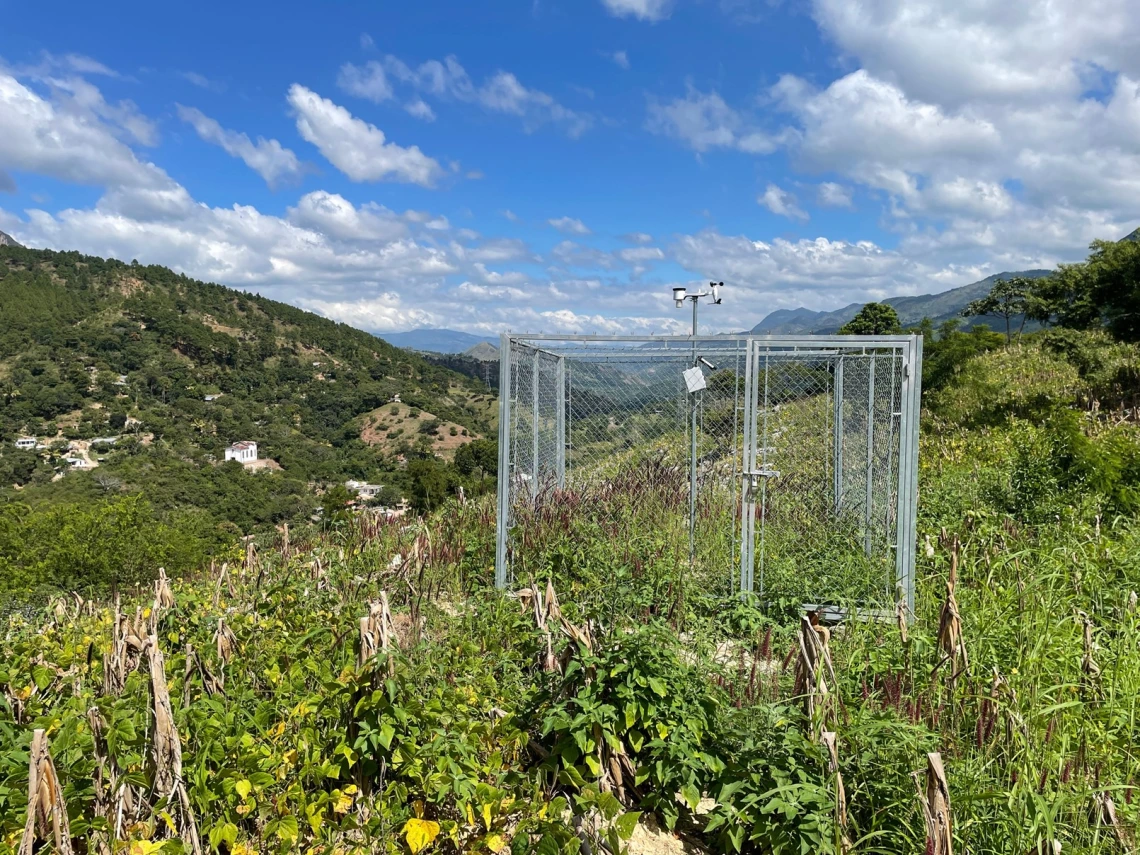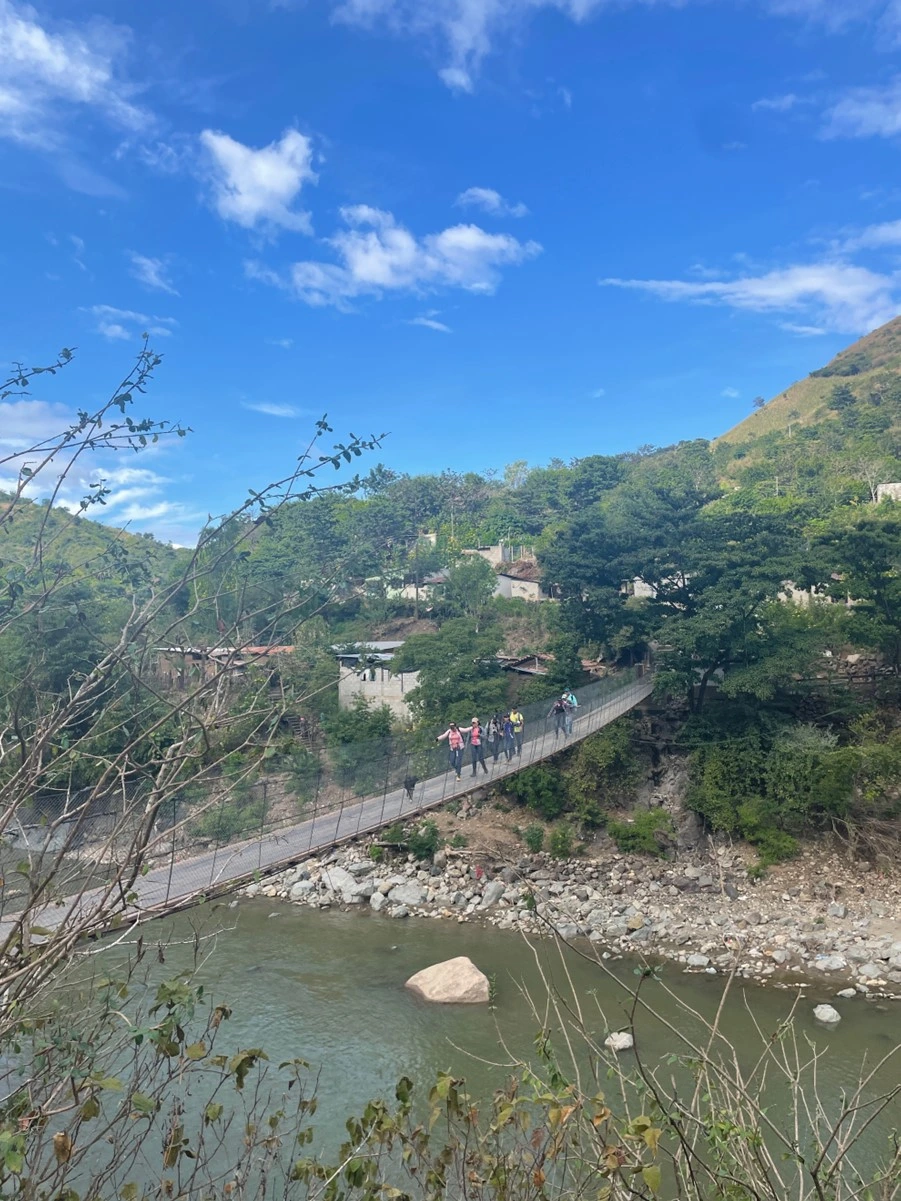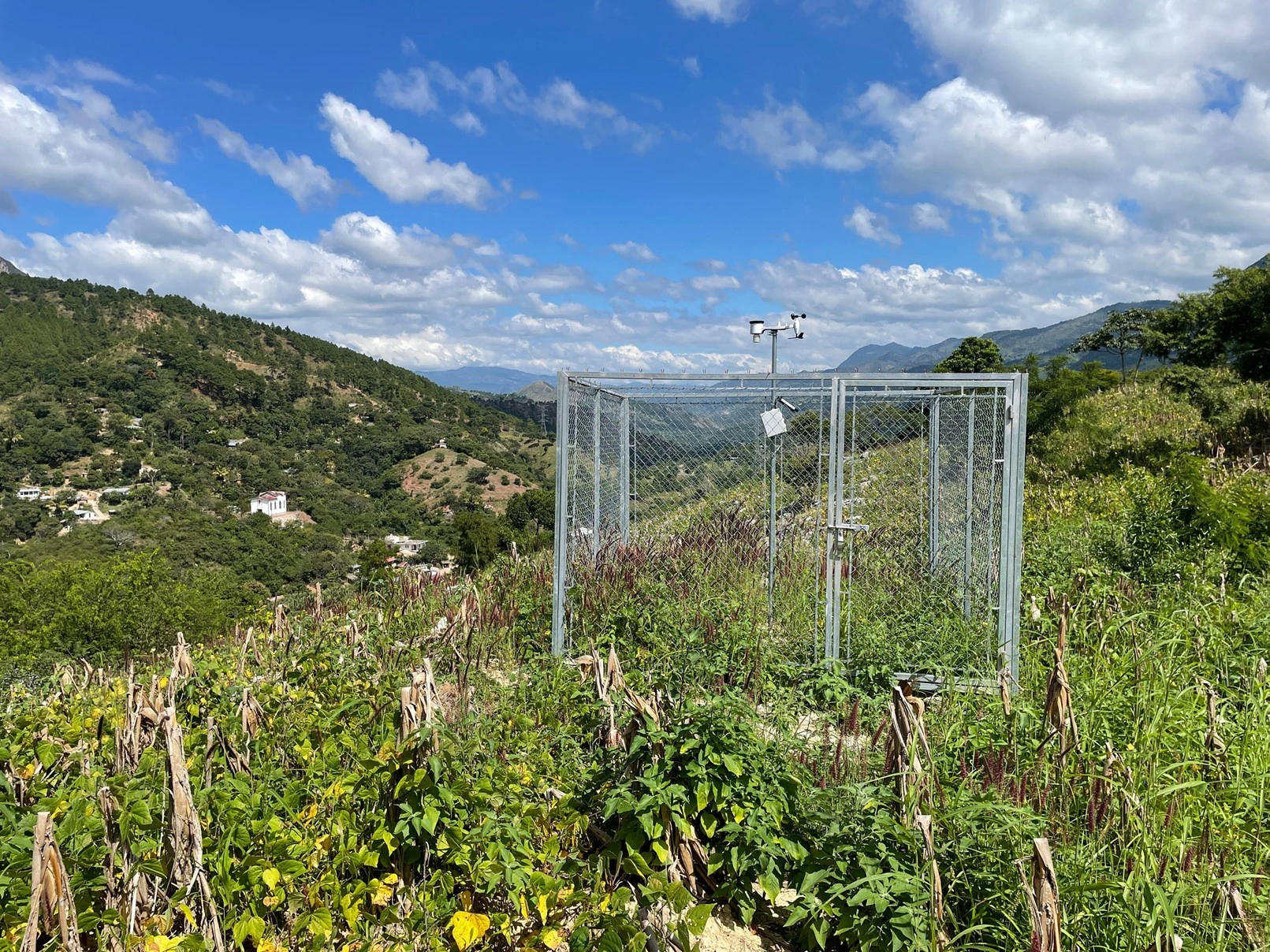What's going on with the rains?

“Había más regularidad unos diez años atrás,” recalled a farmer as he took a break from bending his corn stalks in half to dry, explaining how the rains in Guatemala were more regular 10 years ago. His account of how the rains had changed was one among many from the families we interviewed in the departments of Totonicapán and Chiquimula, Guatemala in fall 2022. The timing and amount of rainfall are especially important for farmers in these regions – the vast majority of them have incredibly small farms and rely on the rains to produce food for the year.

Corn drying after harvest to be used later for tortillas or next year’s seeds. Only the best cobs get saved for seeds.
While many farmers have noticed recent changes in climate – the rains aren’t as regular as they used to be or they are arriving late – a clear climate change signal has yet to emerge from measurements of rainfall from weather stations and satellites across most of Guatemala. My research focuses on understanding this mismatch and why the climate data don’t seem to show the same changes the farmers have noticed.
To start, I, along with a team of 16 undergraduate students and community members from Totonicapán and Chiquimula, interviewed over 700 farming households. We asked them about patterns in rainfall over recent years and how they compare to their memories from a decade or even longer ago. One farmer indicated that 2022 was the year that broke the “7 años de verano” (7 years of summer). Another shared that they planted before the rains started in the past, but now they wait until they have arrived, indicating the timing is not as reliable as it once was. Their accounts provide unique insight into what changes have occurred in their communities and on their farms.

Half of our research team on their way to interview households.
To complement the interviews, we installed a set of new weather stations across the complex mountain terrain. Measuring rainfall differences across gradients of the steep slopes provides another way to evaluate changes. The stations allow us to see if rainfall measurements captured from high above by satellites can record the differences in rainfall on the ground from the highest peaks to the lowest valleys.
By combining the accounts of farmers, the weather station measurements, and satellite information, I will be able to assess change and variability in rainfall and extreme events from multiple perspectives and across spatial and temporal scales. Because much of Guatemala lacks long-term historical weather station records, this integration of diverse sources will lead to a better understanding of current and future changes. This is critical as Central America is a global hot spot for future drying, meaning less rain and warmer temperatures. These future decreases will create new challenges for millions of farmers and their families, like the ones we interviewed who rely on rainfall for agriculture.

One of the weather stations we installed in the department of Chiquimula among a field of corn that has been bent over to dry out before harvest.
As I start my CLIMAS fellowship, I am just beginning to combine information from interviews and the climate data, and have yet to understand why the mismatch exists. So why should we care about this mismatch? Since my first fieldwork experience – 8 years ago coring trees to study past rainfall patterns in Guatemala – I have been fascinated not only by learning new research methods to study the complexities of climate across mountain landscapes, but also by the ways in which humans are affected by and adapt to changing environments. My current work builds on collaborations I have developed since then with Agroclimate groups who provide seasonal forecasts to farmers, as well as my interests in climate variability and human experiences of environmental change. Resolving the mismatch between what farmers have observed and the climate data can help us better understand changes that are occurring now and in the near future to improve forecasting efforts and to create more useful climate information that supports farmers and their agricultural decision-making.

